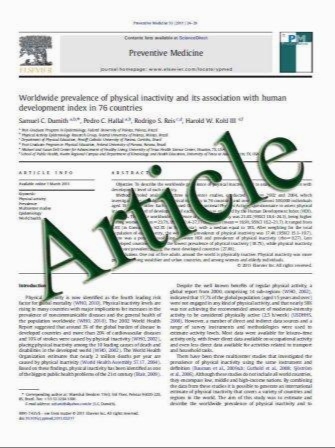Risk factors for posttraumatic stress reactions among chinese students following exposure to a snowstorm disaster
- نوع فایل : کتاب
- زبان : انگلیسی
- مؤلف : Daxing Wu*, Huifang Yin, Shujing Xu, Ying Zhao
- چاپ و سال / کشور: 2011
Description
Background: It is important to understand which factors increase the risk of posttraumatic stress disorder (PTSD) in adolescents. Previous studies have shown that the most important risk factors for PTSD include the type, severity, and duration of exposure to the traumatic events. Methods: A cross-sectional survey was used to investigate the psychological symptoms associated with the aftermath of a snowstorm disaster in the Hunan province of China in January 2008. Students living in Hunan were surveyed at a three-month follow-up after the disaster. The questionnaire battery included the Impact of Event Scale-Revised (IES-R, trauma and symptoms associated with PTSD), the Chinese version of the Life Orientation Test- Revised (LOT-R, optimism and pessimism), the Chinese version of the Eysenck Personality Questionnaire (EPQ, neuroticism and extraversion), the Chinese Trait Coping Style Questionnaire (TCSQ, positive and negative coping styles), and a range of questions addressing social demographic characteristics and factors relating to the snowstorm. The survey was administered in school, and 968 students completed and returned the questionnaires. Results: The results showed that 14.5% of the students had a total IES-R score .20. Students with greater schoolto- home distances showed higher levels of posttraumatic stress symptoms than students who lived shorter distances from school. Students with emotional support from their teachers reported higher levels of posttraumatic stress symptoms (21.20%) than students without a teacherپfs emotional support (11.07%). The IES-R total and subscale scores correlated with all variables except extraversion. The binary logistic regression analysis results showed that the teacherپfs emotional support [odds ratio (OR) = 1.72, 95% confidence interval (CI) = 1.13-2.62], school-to-home distance (OR = 1.01, 95% CI = 1.00-1.01), negative coping (OR = 1.05; 95% CI = 1.02-1.08), and neuroticism (OR = 1.04, 95% CI = 1.02-1.06) were risk factors that predicted PTSD frequency and severity (percentage correct = 85.5%). Conclusions: The risk factors that significantly impacted the onset of posttraumatic stress reactions in students living in Hunan, China following a snowstorm disaster were the school-to-home distance, negative coping, neuroticism, and teacherپfs emotional support.


